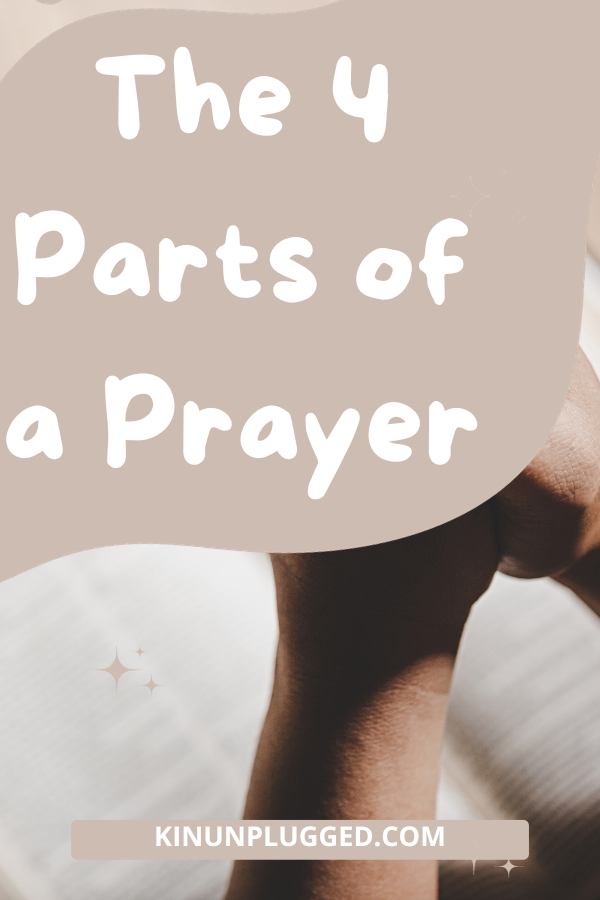Are you wondering how to write a prayer? In this article, we’ll go through the various parts of a prayer to serve as a guide for you as you speak to God from your heart.
Table of Contents
ToggleWhat are the 4 steps to writing a prayer?

Arguably, prayer can be written in four steps: adoration, confession, thanksgiving and supplication.
These four elements provide a framework for a well-rounded and meaningful prayer experience:
- Adoration (praise)
The first step in crafting a prayer is adoration or praise. Begin by acknowledging and praising God. Express admiration and reverence for the qualities, attributes, and goodness of God.
Share your feelings of awe and wonder about the universe, creation, or the spiritual realm. Adoration sets the tone for the prayer by recognizing the greatness and majesty of God.
- Confession (acknowledgment)
Confession involves acknowledging your own shortcomings, sins, or mistakes. It’s a moment of reflection and self-awareness where you honestly recognize your imperfections and areas where you may have fallen short of your values or beliefs.
This step is about seeking forgiveness and cleansing, both spiritually and emotionally. It’s an opportunity for self-reflection, humility and an earnest desire for growth and improvement.
- Thanksgiving (gratitude)
Thanksgiving is the act of expressing gratitude for the blessings, gifts, and positive aspects of your life. It’s a moment to count your blessings and appreciate the good things, people and experiences that have come your way.
This step encourages a positive and grateful attitude, fostering contentment and recognizing the abundance in your life. It can include thanks for personal achievements, relationships, health and daily provisions.
- Supplication (petition)
Supplication is the part of the prayer where you make requests, seek guidance, or intercede for others. It’s an opportunity to ask for help, guidance, strength or specific needs, both for yourself and on behalf of others.
Whether you’re seeking guidance in difficult decisions, healing for yourself or loved ones or simply asking for daily provisions, supplication allows you to voice your desires and concerns to God.
These four steps provide a balanced structure for prayer, encompassing praise, confession, gratitude, and requests.
31 Commanding Decrees and Declarations to Protect My Family
What are the three parts to a prayer?
You could say there are three parts to prayer if you do not count thanksgiving as a separate part. In that case, the three parts to a prayer would be praise, pardon and petition.
Reasons for differences
Here’s why some people say there are three parts to prayer, while others emphasize four:
- Three-part prayer
Simplicity: Some religious traditions or individuals prefer a simplified structure for prayer that encompasses three primary elements: praise, pardon (or confession), and petition (supplication). This concise format is easy to remember and practice, making it accessible to a wide range of believers.
- Four-part prayer
Comprehensiveness: Other religious traditions, particularly within Christianity, emphasize a more comprehensive structure by adding a distinct element of thanksgiving (gratitude) to the prayer sequence. This four-part structure allows for a balanced expression of adoration, confession, gratitude and requests.
- Denominational differences
The specific structure of prayer can vary among Christian denominations and religious groups. Some denominations emphasize a three-part structure, while others adhere to a four-part format. These differences often reflect theological or doctrinal distinctions within the faith.
- Personal interpretation
Even within a single religious tradition, individuals may have personal interpretations and preferences for how they structure their prayers. Some may find that three parts align better with their spiritual practice, while others appreciate the added dimension of thanksgiving as a separate component.
- Cultural and historical factors
Cultural and historical factors can also influence how prayer is structured and taught within a religious tradition. Over time, certain practices and teachings may evolve, leading to variations in prayer formats.
How to start a prayer
As explained above, praise is a great starting point. Acknowledging the greatness of the Father you are speaking to the best way to come before Him.
Begin by addressing God. This can be done using phrases like “Dear God,” “Heavenly Father,” “Lord,” or any other name or title that is meaningful to you. Start with gratitude by thanking the divine for blessings and experiences in your life. Clearly state your intention or purpose for the prayer, whether it’s seeking guidance, finding peace or asking for strength.
What is the correct way to end a prayer?

As we go through the process of how to write a prayer, it may also be helpful to know how people usually end a prayer.
- Amen
“Amen” is a widely used word to conclude a prayer. It signifies agreement, affirmation, or “so be it.” Many people end their prayers with “Amen” to express their faith and trust in God.
- In Jesus’s Name
Some conclude prayers by saying something like “In Jesus’ name”. This is often used to invoke the power and authority of God.
- Closing blessing
You can conclude your prayer by offering a closing blessing, such as “May peace be with you” or “Blessings to all.” This can be a way to extend positive wishes to yourself and others.
- Personal closing
Conclude your prayer with a personal and heartfelt closing statement or words of gratitude. You can simply express your own thoughts and feelings to wrap up the prayer.
- Silent reflection
Some people prefer to end their prayers in silent reflection or meditation, taking a moment to absorb the prayer’s message or simply sit in stillness.
- Traditional closing
For example, the Lord’s Prayer ends with “For thine is the kingdom, the power, and the glory forever. Amen.”
What is an example of a basic prayer?

Prayers can be highly personal and may vary in content and structure however if you want to learn how to write a prayer, here is one basic example:
Dear God,
I come before you today with a grateful heart. Thank you for the gift of life and the blessings that surround me.
I acknowledge my shortcomings and ask for your forgiveness. Please cleanse my heart and help me grow in love and kindness.
I lift up to you my loved ones and ask for your protection and guidance over them. May they find peace and happiness in their lives.
Grant me strength and wisdom to face the challenges that lie ahead. Let your light shine upon my path, showing me the way.
In your name, I pray.
Amen.
This simple prayer expresses adoration, confession, thanksgiving, and supplication, following a basic structure of communication with God.
What motivated you to learn to write a prayer today?





